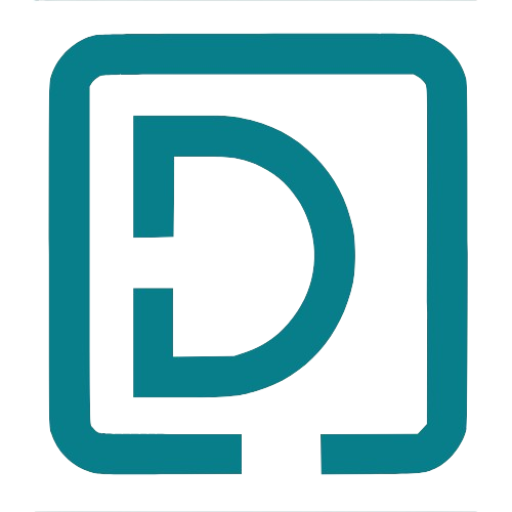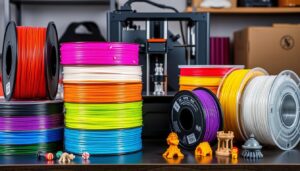Imagine a world where making complex parts for airplanes or custom prosthetics is simple. This idea was once science fiction. But now, advanced 3D printing techniques are making it real.
These new processes are changing industries. They bring together additive manufacturing technologies for quick prototyping and customization. They also make it possible to create complex shapes.
As companies use these advanced 3D printing methods, they save money and reduce waste. They open up a future full of endless possibilities.
Key Takeaways
- Advanced 3D printing techniques revolutionize modern manufacturing.
- These methods allow for rapid prototyping and customization.
- Additive manufacturing technologies reduce waste and cut costs.
- Complex geometries can be produced that traditional methods can’t achieve.
- Industries are embracing these technologies for limitless innovation.
1. Introduction to Advanced 3D Printing Techniques
Advanced 3D printing techniques have changed how we make things. They use the latest tech to create detailed designs with great accuracy. This lets many industries make 3D objects straight from digital models, boosting creativity and efficiency.
The introduction of these new 3D printing methods has changed old ways of making things. Now, making things is more dynamic and flexible.
What is Advanced 3D Printing?
Advanced 3D printing uses new ways to make complex shapes. It’s different from old methods that take things away. Instead, it builds objects layer by layer.
This method improves accuracy, cuts down on waste, and opens up new design options. It helps many industries customize their products.
Evolution of 3D Printing Technologies
The history of 3D printing is amazing. It started with simple ways to make shapes. But over time, new, advanced methods came along.
These new methods focus on high-quality output and being versatile. Now, fields like aerospace, automotive, and healthcare use these advanced techs. They make things that were once impossible.

2. Key Types of Advanced 3D Printing Techniques
Advanced 3D printing techniques have changed manufacturing a lot. They allow for making detailed designs with different levels of complexity and precision. Each method has its own special features and uses, meeting various industry needs. Knowing these techniques helps manufacturers pick the right one for their projects.
Stereolithography (SLA)
Stereolithography is an early high-resolution 3D printing method. It uses a UV laser to cure polymer layers, making precise models. SLA printers are known for their smooth finishes and detailed designs, perfect for prototypes and complex designs in many fields.
Selective Laser Sintering (SLS)
Selective Laser Sintering uses a laser to fuse powdered materials, making strong parts ready for production. This method is great for creating complex shapes and functional parts that need to be strong. SLS works with many advanced materials, making it useful in engineering and product development.
Fused Deposition Modeling (FDM)
Fused Deposition Modeling is popular in both home and commercial 3D printing. It builds models by layering melted filament. FDM is easy to use and versatile, fitting many needs, from hobby projects to professional manufacturing.
Multi-Material Printing
Multi-material printing advances 3D printing by mixing different materials in one print. This allows for more complex designs and functions. It uses advanced materials, leading to new product ideas and uses.
| Technique | Key Features | Applications |
|---|---|---|
| Stereolithography (SLA) | High-resolution prints, smooth finishes | Prototyping, jewelry, dental models |
| Selective Laser Sintering (SLS) | Complex shape creation, durable parts | Aerospace, automotive, functional testing |
| Fused Deposition Modeling (FDM) | Ease of use, material versatility | Hobbyist projects, educational purposes, tooling |
| Multi-Material Printing | Combines multiple materials, enhances functionality | Complex assemblies, prototypes, consumer products |
3. Benefits of Advanced 3D Printing in Manufacturing
Advanced 3D printing changes the game in manufacturing. It brings new ways to make things that were not possible before. Companies can work more efficiently and save money. Let’s look at some key benefits this technology offers.
Cost Efficiency and Waste Reduction
One big plus of 3D printing is it cuts down on waste. Old ways of making things often waste a lot of material. But 3D printing only uses what’s needed, saving money and resources. This is great for companies wanting to be more sustainable.
Speed and Flexibility in Production
3D printing makes making things much faster. It lets businesses quickly try out new designs. This means they can make better products faster and be more creative.
Companies can also change their designs fast to meet customer needs. This is a big change from the slow times of old manufacturing ways.
Customization and Design Freedom
Customization is a big win with 3D printing. It lets makers create special items just for one customer. Designers can make complex shapes that were hard or impossible before.
This means products can be truly unique and meet specific customer needs. It also lets designers be more creative.

| Benefit | Traditional Methods | 3D Printing Methods |
|---|---|---|
| Material Waste | High | Low |
| Production Speed | Slow | Fast |
| Customization Options | Limited | Extensive |
4. Future Trends in 3D Printing Technology
The future of 3D printing looks very promising. Several exciting trends are coming that will change many industries. One big area is using artificial intelligence (AI) with 3D printing.
AI can make design and printing better by using predictive analytics. This helps find problems early, making production smoother and products better.
Integration with Artificial Intelligence
Adding advanced materials to AI systems improves control over making things. AI can look at material properties and suggest the best ones for different uses. This makes creating new 3D printing methods more efficient than ever.
Bioprinting and Medical Applications
Bioprinting is another big trend, especially in medicine. 3D printing is used to make real tissues and even organs. This is leading to big steps forward in regenerative medicine.
This innovation could save lives and cut down wait times for organ transplants. It shows the caring side of 3D printing.
Sustainable Materials and Eco-Friendly Practices
The industry is moving towards being more green. More eco-friendly materials are being used. These materials are biodegradable and recyclable, reducing harm to the environment.
This change is key for companies wanting to lower their carbon footprint. It also keeps the benefits of modern manufacturing.
Industry-Specific Innovations
Many sectors like fashion, construction, and aerospace are getting special 3D printing solutions. These techniques help solve unique problems in each field. For example, making lightweight parts for planes or customizing clothes.
As these areas grow, the mix of 3D printing and their needs will lead to amazing breakthroughs.




